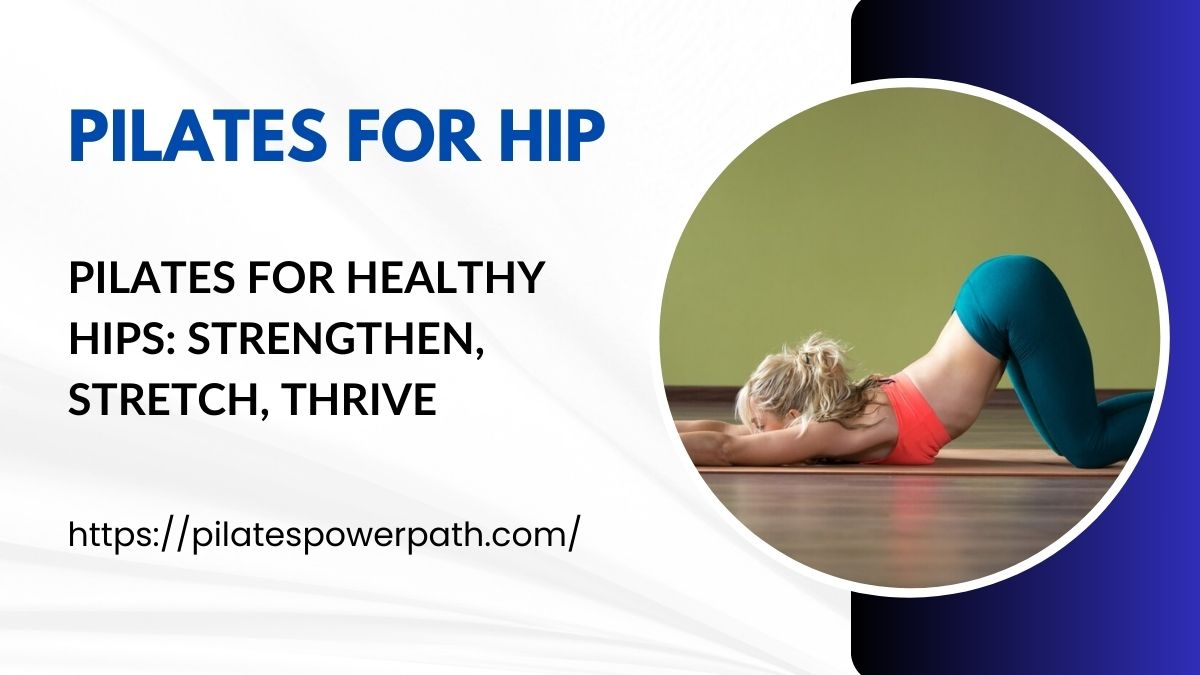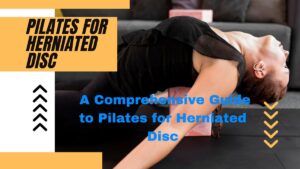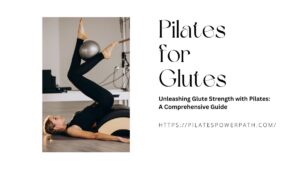Pilates for Hip health is integral to our overall well-being, impacting our mobility, posture, and daily activities. The hip joint is a crucial pivot point in the body, responsible for bearing weight, facilitating movement, and connecting the lower body to the torso. When the hips are in optimal condition, it can positively influence our quality of life.
One effective method for enhancing hip strength and flexibility is through the practice of Pilates. Originating from the teachings of Joseph Pilates, this exercise system focuses on controlled movements, emphasizing core strength, alignment, and flexibility. Pilates offers a holistic approach that specifically targets the muscles surrounding the hips, aiding in their stability and mobility.
Understanding the Hip
Anatomy of the Hip Joint
The hip joint comprises the femur (thigh bone) and the acetabulum (socket in the pelvis). Muscles, tendons, and ligaments work in harmony to support and move the joint. Understanding the complex structure of the hip allows for a deeper appreciation of its functions and vulnerabilities.
Read More: Unleashing the Potential of Dancers with Pilates
Common Issues Affecting Hip Health
Tightness, weakness, and injuries are prevalent concerns impacting hip health. Sedentary lifestyles, poor posture, overuse, or sudden trauma can contribute to these issues. Tight hip flexors, weak glutes, or imbalances in the muscles around the hip joint can lead to discomfort, reduced range of motion, or even chronic conditions like hip impingement or bursitis.
Benefits of Pilates for Hip Health
Improved Flexibility
Pilates exercises employ a range of movements that target hip flexibility. Techniques such as the “Pilates Leg Circles” and “Hip Opener” exercises focus on lengthening and stretching the hip muscles, promoting increased flexibility over time.
Strengthening the Hip Muscles
Specific Pilates movements, like “Bridges,” “Clams,” or “Side Leg Lifts,” engage and strengthen the muscles surrounding the hips. These exercises aim to enhance muscle endurance, stability, and overall strength, reducing the risk of injuries and improving functional movement.
Correcting Imbalances
Pilates emphasizes balanced muscle development. By targeting both larger and smaller muscles around the hips, Pilates exercises help address muscle imbalances, promoting optimal function and reducing strain on the joint.
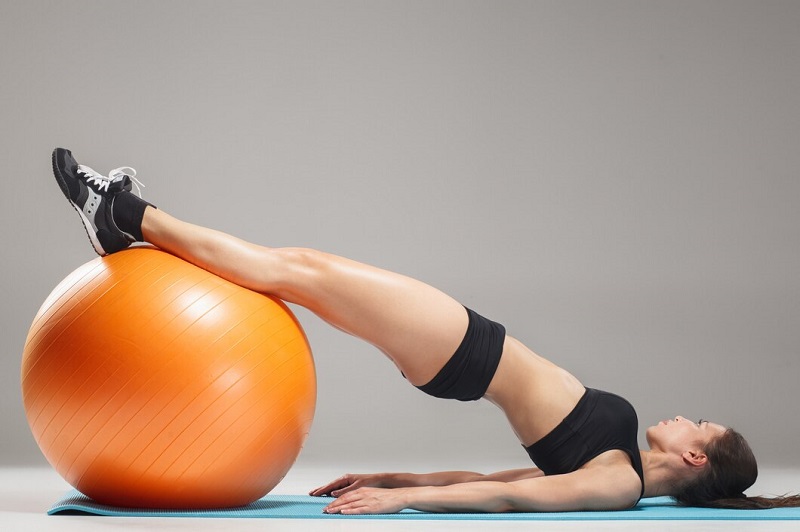
Enhancing Stability and Mobility
Pilates incorporates exercises that focus on core stability and controlled movement patterns. Movements like “Hip Rolls” or “Pilates Swimmer” aid in improving hip stability and range of motion, fostering better mobility in daily activities.
Pilates Exercises for Hip Health
Warm-up Exercises
Before engaging in Pilates movements, it’s crucial to prepare the hips with gentle warm-up exercises. Simple movements like pelvic tilts, knee-to-chest stretches, or gentle hip circles help loosen the muscles and joints.
Flexibility-Focused Exercises
Pilates offers various exercises that target hip flexibility. Techniques such as the “Pilates Mermaid Stretch” or “Thread the Needle” pose work on increasing the range of motion and relieving tension in the hips.
Strength-Building Exercises
Specific Pilates movements like “Single Leg Circles,” “The Hundred,” or “Leg Springs Series” are tailored to strengthen the hip muscles, promoting stability and endurance while targeting different muscle groups around the hips.
Stability and Mobility Exercises
Pilates incorporates exercises that challenge hip stability and mobility. Movements such as “The Swan,” “Side Plank Variations,” or “Pilates Leg Pulls” aim to enhance both strength and mobility, contributing to better overall hip function.
Cool-down and Stretching
Concluding a Pilates session with gentle stretches like the “Pigeon Pose,” “Butterfly Stretch,” or “Figure Four Stretch” can help release any residual tension in the hips and aid in recovery.
Tips for Practicing Pilates for Hip Health
Importance of Proper Form and Technique
Correct form is crucial in Pilates to prevent injury and effectively target the intended muscles. Focus on alignment and engage the core during movements for optimal results.
Gradual Progression
Start with foundational exercises and gradually progress to more advanced movements as your strength and flexibility improve. Pushing too hard too soon can lead to strain or injury.
Listening to Your Body
Pay attention to your body’s signals. If an exercise causes pain or discomfort in the hips, modify or avoid it. Always work within your comfort level.
Consistency in Practice
Regular Pilates practice yields better results. Aim for consistency in your routine to experience improvements in hip strength, flexibility, and overall well-being.
Precautions and Modifications
Precautions for individuals with hip injuries or conditions
For individuals with hip injuries or pre-existing conditions like arthritis or bursitis, it’s crucial to exercise caution when engaging in Pilates or any physical activity. Before starting any Pilates routine, it’s essential to consult a healthcare professional or a qualified Pilates instructor. They can guide specific movements to avoid or modify based on the individual’s condition. For instance, individuals with hip injuries might need to steer clear of high-impact movements and focus on low-impact exercises that don’t exacerbate their condition.
Modifications for beginners or those with limited hip mobility
Beginners or individuals with limited hip mobility can benefit from modified Pilates exercises. For instance, instead of performing full-range leg circles, they can start with smaller movements to gradually improve mobility. Pilates instructors often offer variations and props like resistance bands or pillows to support those with limited hip mobility. These modifications allow individuals to build strength and flexibility gradually while minimizing strain on the hips.
Consulting a healthcare professional before starting a new exercise routine
Regardless of one’s fitness level, it’s always advisable to consult a healthcare professional before starting any new exercise routine, especially if there are existing health concerns or prior injuries. This precaution ensures that the exercise plan aligns with the individual’s health condition and helps prevent any potential exacerbation of hip issues.
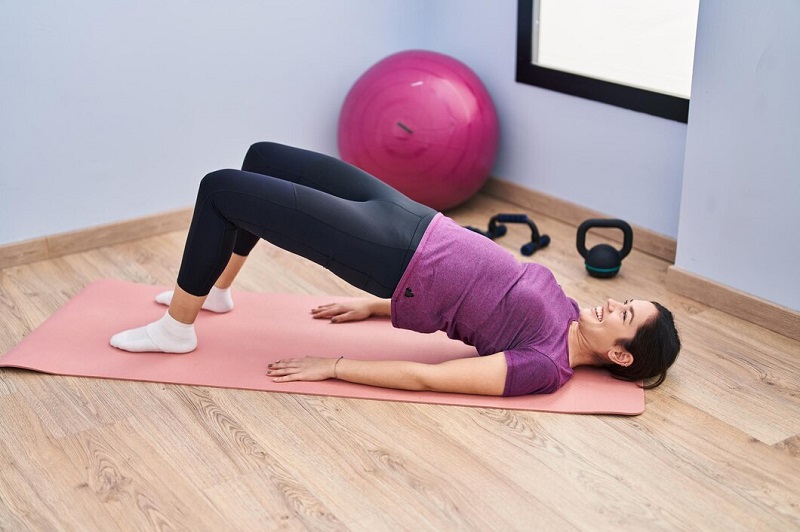
Lifestyle Tips for Better Hip Health
Incorporating movement throughout the day
Sedentary lifestyles can contribute to hip stiffness and discomfort. Simple activities like taking short breaks to stretch, walking or standing periodically, and avoiding prolonged sitting can prevent hip tightness. Implementing a regular movement routine, such as walking, swimming, or cycling, can complement Pilates and contribute to overall hip health.
Ergonomic considerations for sitting and standing
Maintaining good posture while sitting and standing is crucial for hip health. Ergonomic adjustments like using supportive chairs with proper lumbar support, keeping the hips and knees at 90-degree angles while seated, and avoiding slouching can help reduce strain on the hips. Additionally, standing desks or alternating between sitting and standing throughout the workday can alleviate hip pressure.
Additional activities or exercises complementing Pilates for hip health
Incorporating activities like yoga, swimming, or gentle stretching exercises alongside Pilates can further enhance hip flexibility, strength, and overall mobility. These activities offer diverse movements that engage different muscle groups, supporting the benefits gained from Pilates exercises.
Conclusion
In conclusion, Pilates serves as an effective method for improving hip health by focusing on flexibility, strength, stability, and mobility. Through targeted exercises and mindful practice, Pilates offers numerous benefits for individuals seeking to enhance their hip mobility, prevent injuries, and promote overall wellness. By incorporating Pilates into a routine and adopting healthy lifestyle habits, individuals can experience improved hip function, reduced discomfort, and better overall physical well-being. Remember, consistency, proper technique, and seeking professional guidance are key elements in maximizing the benefits of Pilates for hip health.
FAQs (Frequently Asked Questions)
Pilates can be beneficial for individuals experiencing hip pain as it focuses on strengthening and stretching muscles around the hip joint. By improving flexibility, enhancing muscle strength, and correcting imbalances, Pilates can alleviate some forms of hip discomfort. However, it’s crucial to consult a healthcare professional to determine the cause of the pain and get personalized guidance on incorporating Pilates safely into your routine.
The frequency of Pilates practice for hip health can vary depending on individual needs and fitness levels. Starting with 2-3 sessions per week and gradually increasing frequency as comfort and strength improve is a common approach. Consistency is key, but it’s also important to allow for adequate rest and recovery between sessions. Listen to your body and adjust the frequency based on how you feel.
Yes, several Pilates exercises specifically target hip mobility. Movements like leg circles, hip rolls, clamshells, and hip flexor stretches are particularly effective in enhancing hip mobility. These exercises aim to increase the range of motion in the hip joint, improve flexibility, and release tension. However, it’s essential to start slowly, focus on proper form, and gradually progress to more challenging movements to avoid strain or injury.

